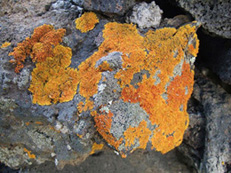Three Types of Weathering
Like the artist uses different processes to form a sculpture, nature uses different types of weathering as tools. There are three main types of weathering: physical, chemical, and biological. Each depends on the forces involved.
- Physical weathering, or mechanical weathering, is the breaking down of rocks, minerals, or soils into smaller pieces without changing them chemically. Rubbing, heat and pressure all cause physical weathering and disintegrate earth materials into small pieces. An example of physical weathering is a rock developing cracks and breaking under the stress of heat or pressure.
- Chemical weathering occurs when chemicals and water in the environment act on rock, minerals, or soil to produce new chemical substances within the original material. For example, oxygen and water in the atmosphere may combine with iron in soils to produce rust. Such soils or rocks turn deep orange or red from the rust within them.
- Biological weathering is when a living thing produces some form of weathering on an object. It really is a sub-type of both physical and chemical weathering because both physical and chemical weathering can be produced by the activity of living things.
Can you guess which image belongs to which type of weathering? Rollover each for a hint.
Physical weathering does not cause chemical changes in the original substance like chemical weathering does, but both physical and chemical weathering wear down rocks into smaller pieces.


